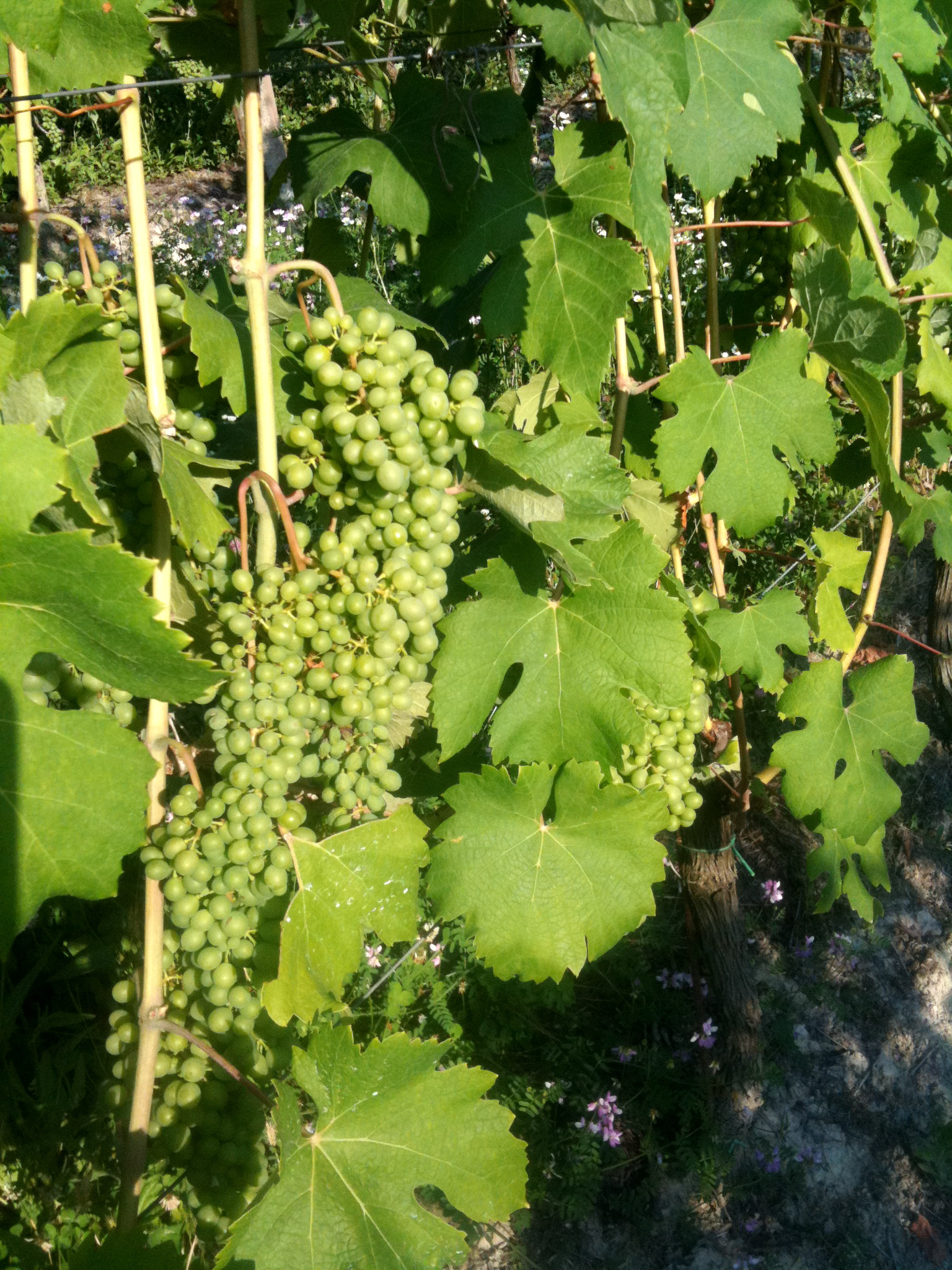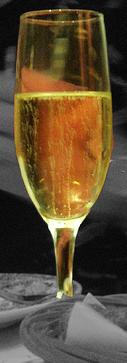|
Crémant
Sparkling wine is a wine with significant levels of carbon dioxide in it, making it fizzy. While it is common to refer to this as champagne, European Union countries legally reserve that word for products exclusively produced in the Champagne region of France. Sparkling wine is usually either white or rosé, but there are examples of red sparkling wines such as the Italian Brachetto, Bonarda and Lambrusco, and the Australian sparkling Shiraz. The sweetness of sparkling wine can range from very dry ''brut'' styles to sweeter ''doux'' varieties (French for 'hard' and 'soft', respectively).J. Robinson (ed) ''"The Oxford Companion to Wine"'' Third Edition pp 656–660, Oxford University Press 2006 . The sparkling quality of these wines comes from its carbon dioxide content and may be the result of natural fermentation, either in a bottle, as with the traditional method, in a large tank designed to withstand the pressures involved (as in the Charmat process), or as a result of sim ... [...More Info...] [...Related Items...] OR: [Wikipedia] [Google] [Baidu] |
Blanquette De Limoux
Limoux wine is produced around Limoux in Languedoc in southwestern France. Limoux wine is produced under four ''Appellation d'origine contrôlée'' (AOC) designations: Blanquette de Limoux, Blanquette méthode ancestrale, Crémant de Limoux and Limoux, the first three of which are sparkling wines and dominate the production around Limoux. The region's main grape is the Mauzac, locally known as ''Blanquette'', followed by Chardonnay and Chenin blanc. In 2005, the Limoux AOC was created to include red wine production, mostly Merlot.J. Robinson (ed) ''The Oxford Companion to Wine'' Third Edition pp. 402–403 Oxford University Press 2006 Wine historians believe the world's first sparkling wine was produced in this region in 1531 by the monks at the abbey in Saint-Hilaire.E. McCarthy & M. Ewing-Mulligan ''French Wine for Dummies'' p. 222 Wiley Publishing 2001 Climate and geography The Limoux wine region is located in the eastern foothills of the Pyrénées in southern France, so ... [...More Info...] [...Related Items...] OR: [Wikipedia] [Google] [Baidu] |
Charmat Process
Sparkling wine production is the method of winemaking used to produce sparkling wine. The oldest known production of sparkling wine took place in 1531 with the ''ancestral method''. Pressure and terminology In popular parlance and also in the title of this article the term ''sparkling'' is used for all wines that produce bubbles at the surface after opening. Under EU law the term ''sparkling'' has a special meaning that does not include all wines that produce bubbles. For this reason the terms ''fizzy'' and ''effervescent'' are sometimes used to include all bubbly wines. The following terms are increasingly used to designate different bottle pressures: * ''Beady'' is a wine with less than of pressure. * ''Semi-sparkling'' is a wine with of pressure. ''Semi-sparkling'' wines include wines labelled as Frizzante, Spritzig, Pétillant and Pearl. * ''Sparkling'' is a wine with above of pressure. This is the only wine that can be labelled as ''sparkling'' under EU law. ''Sparkli ... [...More Info...] [...Related Items...] OR: [Wikipedia] [Google] [Baidu] |
Champagne
Champagne (; ) is a sparkling wine originated and produced in the Champagne wine region of France under the rules of the appellation, which demand specific vineyard practices, sourcing of grapes exclusively from designated places within it, specific grape-pressing methods and secondary fermentation (wine), secondary fermentation of the wine in the bottle to cause carbonation. The grapes Pinot noir, Pinot meunier, and Chardonnay are used to produce almost all Champagne, but small amounts of Pinot blanc, Pinot gris (called Fromenteau in Champagne), Arbane, and Petit Meslier are vinified as well. Champagne became associated with royalty in the 17th, 18th, and 19th centuries. The leading manufacturers made efforts to associate their Champagnes with nobility and royal family, royalty through advertising and packaging, which led to its popularity among the emerging middle class. Origins Still wines from the Champagne region were known before Middle Ages, medieval times. The Anci ... [...More Info...] [...Related Items...] OR: [Wikipedia] [Google] [Baidu] |
Oltrepò Pavese Metodo Classico (wine)
Lombardy wine is the Italian wine produced in the Lombardy region of north central Italy. The region is known particularly for its sparkling wines made in the Franciacorta DOCG, Franciacorta and Oltrepò Pavese areas. Lombardy also produces still red, white and rosé wines made from a variety of local and international List of grape varieties, grapes, including Nebbiolo wines in the Valtellina region and Verdicchio, Trebbiano di Lugana white wines produced with the ''Chiaretto'' style rosé along the shores of Lake Garda. The List of wine-producing regions, wine region currently has 22 ''denominazione di origine controllata'' (DOC), 5 ''List of Italian DOCG wines, denominazione di origine controllata e garantita'' (DOCG) and at least 13 ''indicazione geografica tipica'' (IGT) designations. The main cities of the region are Milan, Bergamo and Brescia.M. Ewing-Mulligan & E. McCarthy ''Italian Wines for Dummies'' pg 89-99 Hungry Minds 2001. . The region annually produces around 1.3 mi ... [...More Info...] [...Related Items...] OR: [Wikipedia] [Google] [Baidu] |
Prosecco
Prosecco (, ) is an Italian wine, Italian Denominazione di origine controllata#Denominazione di origine controllata (DOC), DOC or Denominazione di origine controllata#Denominazione di origine controllata e garantita (DOCG), DOCG white wine produced in a large area spanning nine provinces in the Veneto and Friuli-Venezia Giulia regions, and named after the village of Prosecco, Friuli-Venezia Giulia, Prosecco, in the province of Trieste, Italy. It is made from the Prosecco grape (renamed "Glera (grape), Glera" in Italy in 2009), but denomination rules allow up to 15% of the wine to be other permitted varieties. Prosecco is almost always made in sparkling wine, sparkling or semi-sparkling style (' and ', respectively), but a still wine (') is also permitted. Within the larger designation are two small DOCG areas, ''Conegliano Valdobbiadene Prosecco'' in the hills between the ''Comune, comuni'' (municipalities) of Conegliano and Valdobbiadene, and ''Asolo Prosecco'' around the nearb ... [...More Info...] [...Related Items...] OR: [Wikipedia] [Google] [Baidu] |
Franciacorta (wine)
Franciacorta () is a sparkling wine from the Italian province of Brescia (Lombardy) with DOCG status. It is produced using the traditional method from grapes grown within the boundaries of the territory of Franciacorta, on the hills located between the southern shore of Lake Iseo and the city of Brescia. It was awarded DOC status in 1967, the designation then also including red and white still wines. Since 1995 the DOCG classification has applied exclusively to the sparkling wines of the area.winepros.com.au. History The still wines from this area have ancient traditions, referred to by Virgil and Pliny the Elder, and documented in Brescia City council books as "Franzacurta" as far back as in 1277. The name may derive from the tax-exempt (''francae'') status of the region's towns (''curtes'') in the Middle Ages. The wines were not called Franciacorta until 1957, when Guido Berlucchi released a white wine named Pinot di Franciacorta. An ambitious young winemaker working fo ... [...More Info...] [...Related Items...] OR: [Wikipedia] [Google] [Baidu] |
Trento DOC
Trento DOC (''Denominazione di origine controllata'') is an appellation for white and ''rosé'' sparkling wine made in Trentino, Italy. Trentinos developed this appellation, the second in the world after Champagne, to ensure quality and distinction. Only Chardonnay, Pinot noir, and Pinot Meunier with Pinot blanc are permitted, and they must be grown in a well-defined area within the Province of Trento.P. Saunders ''Wine Label Language'' pp. 209 Firefly Books 2004 History Chardonnay grapes were first brought to the region from France around 1900 by Giulio Ferrari when Trento was still part of the Austro-Hungarian Empire. After graduating from the Forschungsanstalt für Garten- und Weinbau in Geisenheim/Rheingau, Germany, Ferrari gained winemaking Winemaking, wine-making, or vinification is the production of wine, starting with the selection of the fruit, its Ethanol fermentation, fermentation into alcohol, and the bottling of the finished liquid. The history of wine-m ... [...More Info...] [...Related Items...] OR: [Wikipedia] [Google] [Baidu] |
Glass Of Champagne
Glass is an amorphous (non-crystalline solid, non-crystalline) solid. Because it is often transparency and translucency, transparent and chemically inert, glass has found widespread practical, technological, and decorative use in window panes, tableware, and optics. Some common objects made of glass are named after the material, e.g., a Tumbler (glass), "glass" for drinking, "glasses" for vision correction, and a "magnifying glass". Glass is most often formed by rapid cooling (quenching) of the Melting, molten form. Some glasses such as volcanic glass are naturally occurring, and obsidian has been used to make arrowheads and knives since the Stone Age. Archaeological evidence suggests glassmaking dates back to at least 3600 BC in Mesopotamia, Ancient Egypt, Egypt, or Syria. The earliest known glass objects were beads, perhaps created accidentally during metalworking or the production of faience, which is a form of pottery using lead glazes. Due to its ease of formability int ... [...More Info...] [...Related Items...] OR: [Wikipedia] [Google] [Baidu] |
Asti (wine)
Asti (also known as Asti spumante){{cite book , first = Oz , last = Clarke , title = Oz Clarke's Encyclopedia of Wine , pages = 73–74 , publisher = Time Warner Books , location = London , year = 2003 , isbn = 0-316-72654-0 is a Sparkling wine, sparkling white Italian wine that is produced throughout southeastern Piemonte (wine), Piedmont, but is particularly focused around the towns of Asti and Alba, Piedmont, Alba. Since 1993 the wine has been classified as a ''Denominazione di Origine Controllata e Garantita, denominazione di origine controllata e garantita'' (DOCG) and as of 2004 was Italy's largest producing appellation.{{cite book , first = Peter , last = Saunders , title = Wine Label Language , page = 123 , publisher = Firefly Books , year = 2004 , isbn = 1-55297-720-X On an average vintage more than ten times as much Asti is produced in Piedmont than the more well-known Piedmontese red wine Barolo.{{cite book , first = Karen , last = MacNeil , title = The ... [...More Info...] [...Related Items...] OR: [Wikipedia] [Google] [Baidu] |
Cava (Spanish Wine)
Cava (, ; , ) is a sparkling wine of ''denominación de origen'' (DO) status from Spain. It may be White wine, white (''blanco'') or rosé (''rosado''). The Macabeo, Parellada and Xarel·lo are the most popular and traditional grape varieties for producing cava. Chardonnay and Malvasia are also permitted. Authorized red grapes are Garnacha tinta, Monastrell, Trepat, and Pinot Noir. Only wines produced in the Sparkling wine production, traditional method may be labelled "cava"; those produced by other processes may only be called "sparkling wines" (''vinos espumosos''). About 95% of all cava is produced in the Penedès (DO), Penedès area in Catalonia, Spain, with the village of Sant Sadurní d'Anoia being home to many of the largest Catalan production houses. The two major producers are Codorníu Winery, Codorníu and Freixenet. Cava is also produced in other villages in the provinces of Province of Girona, Girona, Province of Lleida, Lleida, Province of Tarragona, Tarragona, and ... [...More Info...] [...Related Items...] OR: [Wikipedia] [Google] [Baidu] |







